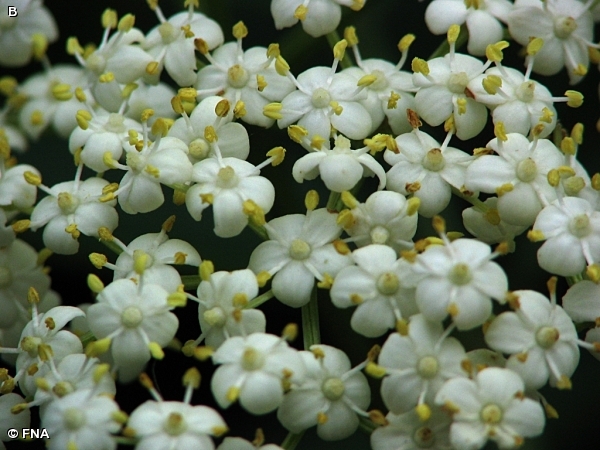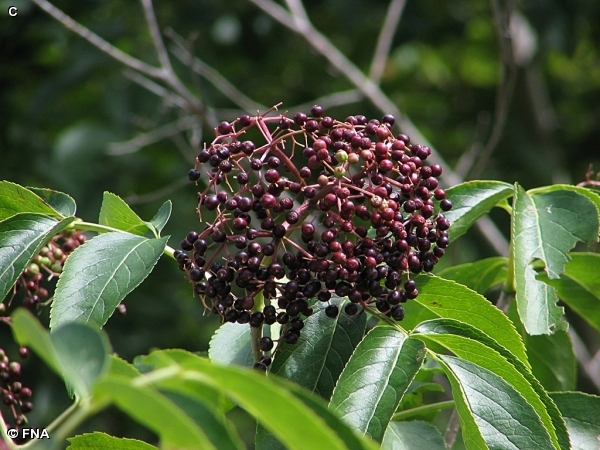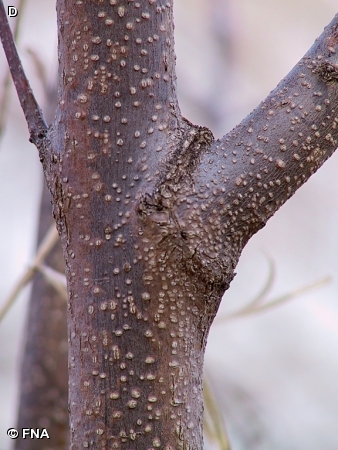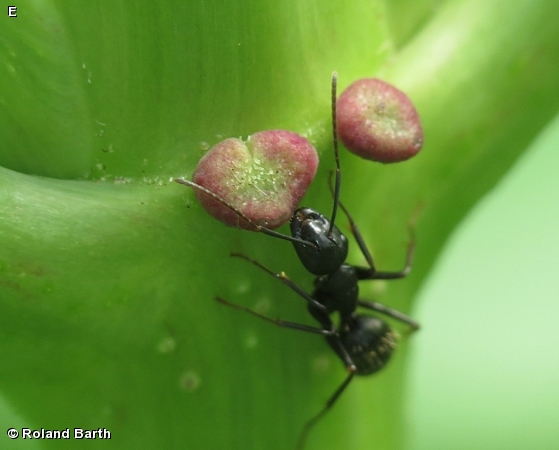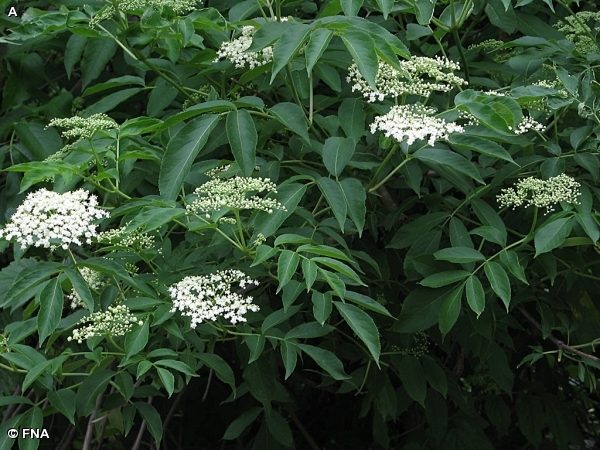
This native shrub, up to 15 feet tall, has stems with dark brown bark and lighter, raised pimples (D). The compound leaves have 7 or 9 pointed leaflets with small, sharp teeth (A). The large, flat-topped flower clusters (cymes) are fragrant. Each flower has 5 creamy-white lobes (B). The fruit clusters, with purple-to-black berries, mature in July and August (C). Some plants have “extrafloral nectaries” which attract ants before flowering. The purpose is not clear, but these sources of nectar are located on leaf nodes of young stems to attract ants on their way up to the flowers (E). Ants are known to be poor polinators. But they may also be available then to repell species that could harm the plants.
Grows in moist woods and along stream banks, flowering in May and June. In Fontenelle Forest, uncommon, for instance along Camp Gifford Road. At Neale Woods, uncommon along MRE Trail.
Elderberries are commonly used in making preserves, jellies and wine.
The content of NatureSearch is provided by dedicated volunteer Naturalists of Fontenelle Forest who strive to provide the most accurate information available. Contributors of the images retain their copyrights. The point of contact for this page is: Roland Barth.

